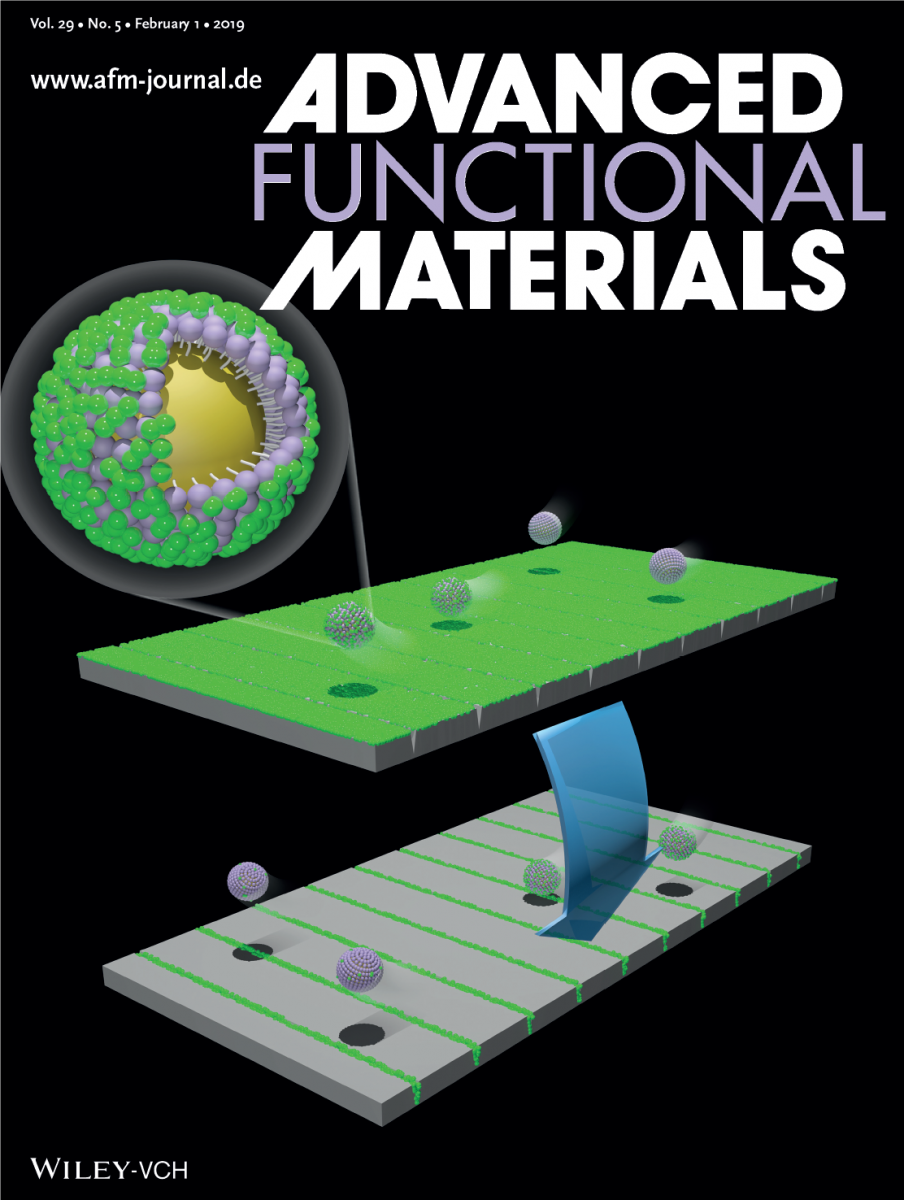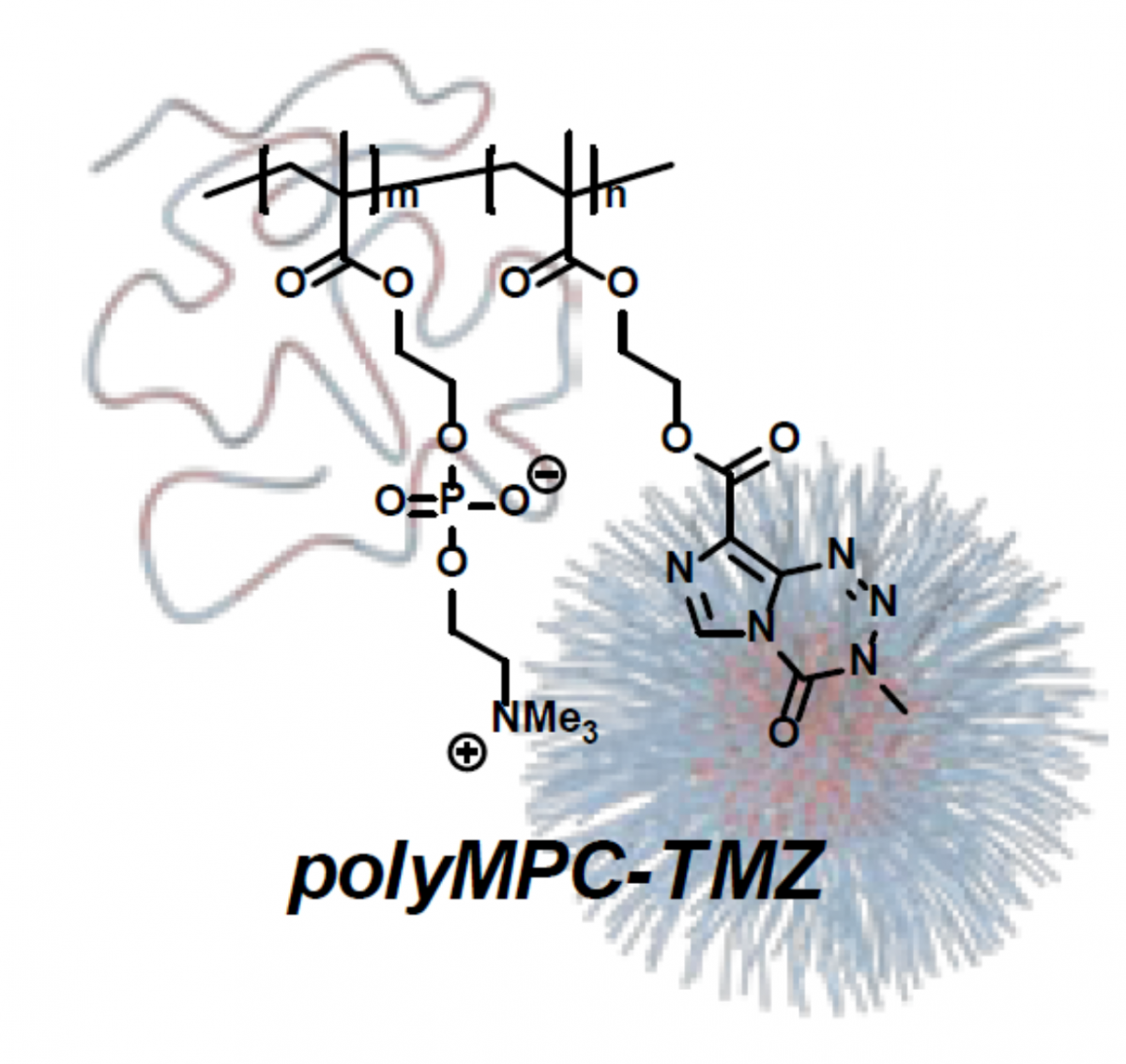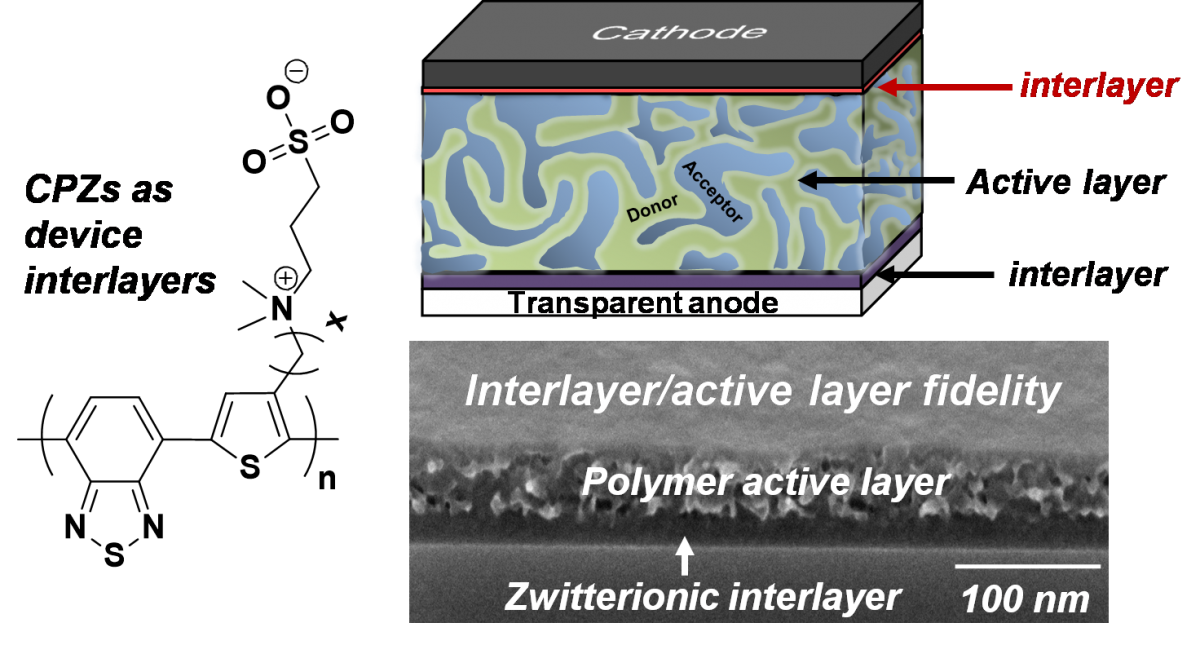Research focus. My group’s work in synthetic polymer chemistry includes the preparation of new monomers, polymers, and nanocomposite structures, and cuts across application areas of biomolecular materials, electronic materials and devices, and interface modification and stabilization. Recognizing that many pressing needs in materials science and engineering cannot be satisfied with commercially available “off-the-shelf” polymers, we strive to discover functional polymers that open exciting opportunities in soft materials science. Some materials chemistry advances made by my group include new types of polymer interlayers in electronic materials and devices (Science 2014, Angew Chem 2019, and ACS Nano 2021), functional polymers that produce “smart droplets” and “adhesive fluids” (Advanced Functional Materials 2019 and J. Am. Chem. Soc. 2021), and methods for preparing a wide range of novel and unconventional polymer zwitterions (J. Am. Chem. Soc. 2021 and ACS MacroLetters 2021). We enjoy working simultaneously along several segments of synthetic chemistry which altogether imparts a collaborative spirit to our group and its activities.
You can follow us on Twitter @Emrickgroup and freely reach out to me at tsemrick@mail.pse.umass.edu.
Examples of @Emrickgroup research
 Smart droplets and approaches to self-healing. In one example of current research, we are designing functional hydrophilic and amphiphilic polymers that segregate to fluid-fluid interfaces, stabilize emulsion droplets, and bring useful functional properties to droplets. Several years ago, inspired by theoretical work of Anna Balazs (U Pittsburgh), we developed a preparation of emulsion droplets that successfully deliver reagents to substrates, and in particular to damaged areas of substrates to promote mechanical healing. This research has since evolved to produce a rich array of smart droplets, typically stabilized by polymer zwitterions in which additional useful functionality is integrated into the backbone. Recently, as shown in the accompanying cover art, we prepared new types of polymer-stabilized droplets that proved amenable to picking up particles from pristine (undamaged) regions of substrates, carrying the particles temporarily, and then depositing the particles into the damaged regions of the same substrate (Advanced Functional Materials, 2019). This “clean-and-repair” concept, inspired by Nature’s ability to use cell surfaces to probe and repair wound sites in vivo, requires tailoring the properties of all relevant interfaces: substrate/droplet, particle/substrate, particle/droplet, and fluid/fluid. In the process of this research, we learn how to simplify the complex chemistry and biology of living systems, using new synthetic polymers and attention to interfacial energies.
Smart droplets and approaches to self-healing. In one example of current research, we are designing functional hydrophilic and amphiphilic polymers that segregate to fluid-fluid interfaces, stabilize emulsion droplets, and bring useful functional properties to droplets. Several years ago, inspired by theoretical work of Anna Balazs (U Pittsburgh), we developed a preparation of emulsion droplets that successfully deliver reagents to substrates, and in particular to damaged areas of substrates to promote mechanical healing. This research has since evolved to produce a rich array of smart droplets, typically stabilized by polymer zwitterions in which additional useful functionality is integrated into the backbone. Recently, as shown in the accompanying cover art, we prepared new types of polymer-stabilized droplets that proved amenable to picking up particles from pristine (undamaged) regions of substrates, carrying the particles temporarily, and then depositing the particles into the damaged regions of the same substrate (Advanced Functional Materials, 2019). This “clean-and-repair” concept, inspired by Nature’s ability to use cell surfaces to probe and repair wound sites in vivo, requires tailoring the properties of all relevant interfaces: substrate/droplet, particle/substrate, particle/droplet, and fluid/fluid. In the process of this research, we learn how to simplify the complex chemistry and biology of living systems, using new synthetic polymers and attention to interfacial energies.
 Polymer zwitterions as biomaterials and in therapeutics. For several years, we have been building the chemistry of polymer zwitterions in new directions, with objectives to produce advanced biomaterials and polymer scaffolds that enable improved drug delivery in vivo. Recognizing the importance of phosphorylcholine (PC)-containing methacrylate polymers (such as pioneered by Ishihara and coworkers), we have constructed a platform of “PC-polymers”, ranging from polyolefins to polyesters to methacrylate derivatives. A particularly exciting opportunity is found in the “reverse PC” or choline phosphate polymers, which we find to be amenable to direct incorporation of useful, reactive functionality for bioconjugation, drug attachment, and cross-linking chemistry (J. Am. Chem. Soc. 2016). Early on, our group recognized the potential to use polymer zwitterions as “PEG-replacements” in therapeutics, and have produced numerous examples of polymer-drug conjugates using polymer zwitterions, including with the chemotherapeutics doxorubicin, camptothecin, and temozolomide (TMZ) (our recent TMZ example is described in ACS Chemical Neuroscience 2018). At the same time, we have studied new types of polymer chemistry and architecture for DNA complexation and delivery, as described in a recently published article (WIREs Nanomedicine 2019) that we co-authored with our collaborator Marxa Figueiredo (Purdue).
Polymer zwitterions as biomaterials and in therapeutics. For several years, we have been building the chemistry of polymer zwitterions in new directions, with objectives to produce advanced biomaterials and polymer scaffolds that enable improved drug delivery in vivo. Recognizing the importance of phosphorylcholine (PC)-containing methacrylate polymers (such as pioneered by Ishihara and coworkers), we have constructed a platform of “PC-polymers”, ranging from polyolefins to polyesters to methacrylate derivatives. A particularly exciting opportunity is found in the “reverse PC” or choline phosphate polymers, which we find to be amenable to direct incorporation of useful, reactive functionality for bioconjugation, drug attachment, and cross-linking chemistry (J. Am. Chem. Soc. 2016). Early on, our group recognized the potential to use polymer zwitterions as “PEG-replacements” in therapeutics, and have produced numerous examples of polymer-drug conjugates using polymer zwitterions, including with the chemotherapeutics doxorubicin, camptothecin, and temozolomide (TMZ) (our recent TMZ example is described in ACS Chemical Neuroscience 2018). At the same time, we have studied new types of polymer chemistry and architecture for DNA complexation and delivery, as described in a recently published article (WIREs Nanomedicine 2019) that we co-authored with our collaborator Marxa Figueiredo (Purdue).
 Conjugated polymer zwitterions (CPZs) for electronic materials & devices. Combining zwitterionic functionality with p-conjugated polymers has yielded a library of new structures that prove impressively useful as interlayer materials in devices such as solar cells. Our initial curiosity as to the properties of conjugated polymers containing zwitterionic pendent groups led to numerous findings, including the impact of CPZs on the work function of metals with which they come into contact and the unique solubility of CPZs that allows for integration of clean CPZ interlayers at the electrode-active layer interface of solar cells (e.g., Science 2014 and ACS Central Science 2018). These two features, coupled with CPZ facilitation of charge transport even for relatively thick interlayers (50 nm or greater), make CPZs exceptionally useful for any of a variety of (opto)electronic materials and devices. We are now finding CPZs, and more generally polymer zwitterions, to produce similarly interesting effects on 2D materials such as transition metal dichalcogenides (TMDCs) and graphene (ACS Nano, 2018), opening yet another avenue for polymer zwitterions in conjunction with electronic materials.
Conjugated polymer zwitterions (CPZs) for electronic materials & devices. Combining zwitterionic functionality with p-conjugated polymers has yielded a library of new structures that prove impressively useful as interlayer materials in devices such as solar cells. Our initial curiosity as to the properties of conjugated polymers containing zwitterionic pendent groups led to numerous findings, including the impact of CPZs on the work function of metals with which they come into contact and the unique solubility of CPZs that allows for integration of clean CPZ interlayers at the electrode-active layer interface of solar cells (e.g., Science 2014 and ACS Central Science 2018). These two features, coupled with CPZ facilitation of charge transport even for relatively thick interlayers (50 nm or greater), make CPZs exceptionally useful for any of a variety of (opto)electronic materials and devices. We are now finding CPZs, and more generally polymer zwitterions, to produce similarly interesting effects on 2D materials such as transition metal dichalcogenides (TMDCs) and graphene (ACS Nano, 2018), opening yet another avenue for polymer zwitterions in conjunction with electronic materials.
